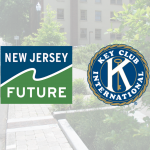New Jersey Future Blog
Public-Private Partnerships Are a Valuable Tool for Expanding Housing
June 10th, 2020 by New Jersey Future staff
Author: Tom Kozma
New Jersey’s towns, like much of the nation’s, are experiencing a second once-in-a-lifetime economic downturn. In order to come back stronger, bold action is needed. However, for a town with ambitious visions of creating a vibrant downtown, high-quality housing, or an easy-to-navigate street network, the price can be daunting. There are many ways for municipalities to finance development, but a public-private partnership (P3) is a particularly versatile tool that offers a lot of potential. A P3 enlists private capital in pursuit of a public good, which could be roads, water systems, or housing. In exchange for shouldering the risk of financing the project and meeting agreed-upon standards, the private developer reaps much of the financial reward of the finished project. Such partnerships are not necessarily limited to municipal governments and for-profit corporations; they can also include nonprofits, individuals, or other levels of government.
On the federal level, the Department of Housing and Urban Development makes widespread use of P3s in its housing programs. The Housing Choice Voucher Program, commonly known as Section 8, is a partnership among HUD, local public housing authorities (PHAs), low-income renters, and private landlords. The PHA pays rental assistance to the landlord on behalf of the renting family, as long as the landlord maintains previously agreed upon quality standards. About 315,000 renters benefit from this arrangement in New Jersey. While most vouchers are used in neighborhoods with concentrated poverty and long waitlists are common, Section 8 still allows for greater social mobility by not concentrating low-income housing in public housing projects. The more recent Choice Neighborhoods Initiative is a P3 among HUD, nonprofits, developers, and local governments focused on rehabilitating and redeveloping entire communities.
P3s are growing on the state level, too. New Jersey authorized state and county colleges to enter into P3s in 2009, leading to a wave of development. Rutgers University, for instance, partnered with the New Brunswick Development Corporation to create mixed-use, transit-oriented development around the College Avenue area with high-rise apartments for over 600 students. Along with similar agreements with NJIT, Rowan University, Rider University, and The College of New Jersey, these types of projects typically involved construction of student housing, dining and retail near mass transit stops.
In 2018, Governor Murphy signed legislation expanding who can enter into P3s and for what reasons. The law now empowers towns, school districts, county and state agencies to create P3s. While the focus of the law is on infrastructure improvements, it can be applied to redevelopment of downtowns, revitalization of vacant properties, upzoning and infill development, and other municipal goals that could address local housing deficits.
At least one town has already taken advantage of P3s. In Somerdale, the property of the previous Our Lady of Grace Church and School lay vacant for about a decade; various actors in town considered and eventually dismissed purchasing and redeveloping it. The town ultimately executed a contract with private developers, Reserve at Grace Urban Renewal, LLC, to build a mixed-use downtown center including 83 mixed-income and mixed-age apartments. The local diocese was supportive of the effort and offered the borough a discount on the land, wanting to preserve the church’s importance to the community instead of having it decay or demolished. As part of the agreement, the town took ownership of the church building itself to guarantee its preservation, only leasing it to the developers. By purchasing the land, Somerdale was able to require certain conditions of the developers, such as discounted rent on 37 age-restricted units for Somerdale residents. The net cost to the borough? Zero.
The borough hopes that the new site, located in the center of town along the White Horse Pike, will serve as a new downtown. While the White Horse Pike is the town’s main commercial corridor, its status as a state highway could complicate the borough’s desire for a more walkable and pedestrian-oriented downtown.
Like any strategy, P3s involve trade-offs. In exchange for providing the capital necessary for the project, private partners will usually require incentives such as management control or favorable costs. In other words, as private capital bears significant risk, it wants sufficient reward. A carrot-and-stick approach is often employed to hold developers accountable to the contract and make sure the project fits the town’s vision. Performance-based pay, for example, is designed to avoid scenarios in which the developer receives public subsidies, but the public gets little tangible benefit in return.
P3s are often more controversial, and have greater risks, when they involve vital infrastructure like water systems, schools, prisons, or other public services. When used for redevelopment, they can transform inefficient land uses like sprawling parking lots and abandoned buildings into attractive community assets with less risk to the public sector.
Successful P3s need transparency, public input, and oversight to work. When done right, a P3 can be a win-win-win scenario for the government, the public, and the developer. In Somerdale’s case, the local government recouped the cost of buying the land from the diocese when they sold it to Reserve at Grace Urban Renewal, LLC. The developer benefited from a lower cost of land than if it were acting alone. The public benefits from the construction of housing just a short stroll away from shops and a restaurant. And the community as a whole benefits because preservation of the decades-old church, which was a treasured local feature, was a key condition of the Reserve at Grace project.
While P3s may not be the perfect solution everywhere, they are a vital strategy in a local government’s toolbox for increasing housing options.
Related Posts
Tags: P3, partnership, public private partnerships
















